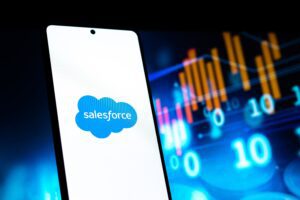Mar tech holding company The Brandtech Group acquired Pencil, a generative AI platform for ads, on Thursday.
The Brandtech Group declined to disclose the financial terms of the deal. Pencil marks the 10th company The Brandtech Group acquired since it launched nearly eight years ago as You & Mr. Jones. Earlier this month, it bought Jellyfish, a digital media and marketing group that worked with major tech platforms like Google and Amazon.
Why Pencil? Its $1 billion media spend across 4,000 brands caught The Brandtech Group founder and CEO David Jones’s eye, particularly since Pencil historically worked with small businesses since its founding in 2018 and had room to grow. The Brandtech Group’s “sweet spot” is large global brands, according to Rebecca Sykes, The Brandtech Group’s emerging tech lead.
Plus, the companies already work together. Together over the last six months, Pencil and The Brandtech Group built a generative AI product that caters to big brands like Bayer and Unilever (who were launch partners), named Pencil Pro.
Just like classic Pencil, Pencil Pro assembles multimodal ads that combine copy, images and other assets for different channels, taking into account a brand’s goals and preferences. It also predicts whether the generated ad will engage consumers, leading to a click, purchase or other result.
“We guide the creative process toward those areas that are promising for a brand in their advertising” and are predicted to perform well, said Pencil co-founder and CEO Will Hanschell.
To meet the requirements of global brands and professional creatives, Pencil Pro includes tools around the generative AI systems that give them a sense of control, according to Hanschell. Brands can set rules about brand tone, look and feel, including specifics such as where a logo can go or words the tech must avoid in copy.
Having a human in the loop is the final bulwark in brand safety. “An individual user, and often multiple people, have to explicitly approve something before it can go out,” Hanschell said.
Pencil Pro is also sensitive to large brands’ concerns about data leakage. To power its predictive systems, Pencil Pro takes each brand’s ad creative data, appends it to Pencil Pro’s large data set, and trains a model on that combination, according to Hanschell. The brand receives a trained model’s custom predictions without its data having entered a communal pool. Pencil Pro develops multiple models for each brand, specific to its different metrics or channels.
Another guardrail Pencil puts into place is around bias.
Since Pencil is built on top of OpenAI’s large language models as well as other AI models, including Stable Diffusion and Runway, “the bias inherent in generative AI is a real issue,” Sykes said. Though she expects that OpenAI will eventually build better anti-bias features, in the meantime The Brandtech Group built a tool called the Bias Breaker.
When a user enters a simple prompt, the tool generates a more complex prompt that includes “a layer of inclusivity to compensate for the level of bias in image generation models,” Sykes said.
For instance, if a user prompts an image generator for images of a CEO, all the generative AI models spit out pictures that are 95%–97% white men. In the real world, CEOs are 88% white men. “Still horrific,” Sykes said, but the AI image generators give users images that are less representative than what they would see in the real world.
When using the CEO prompt through the Bias Breaker tool, users will see CEOs from all backgrounds, genders and levels of ability “because we’re countering the deficit in the model and in the training data.”
After all, Sykes said, “we don’t want to see a regressive look back through a generative lens, simply because the training data doesn’t allow us to generate more progressive and inclusive images.”
Pencil is going to be the last acquisition this year for The Brandtech Group, Jones said. Instead, “we’re going to be focusing on embedding generative AI across everything we do in the group,” he added, and growing Pencil and Jellyfish.
The acquisition also validates Jones’s early interest in AI. From the beginning, The Brandtech Group was interested in “machine-generated content,” Jones said, an idea people laughed at back in 2015. (Who’s laughing now?) The group previously invested in AI companies offering chatbots, media planning and AI twins. Pencil is its first acquisition in the AI space.


















